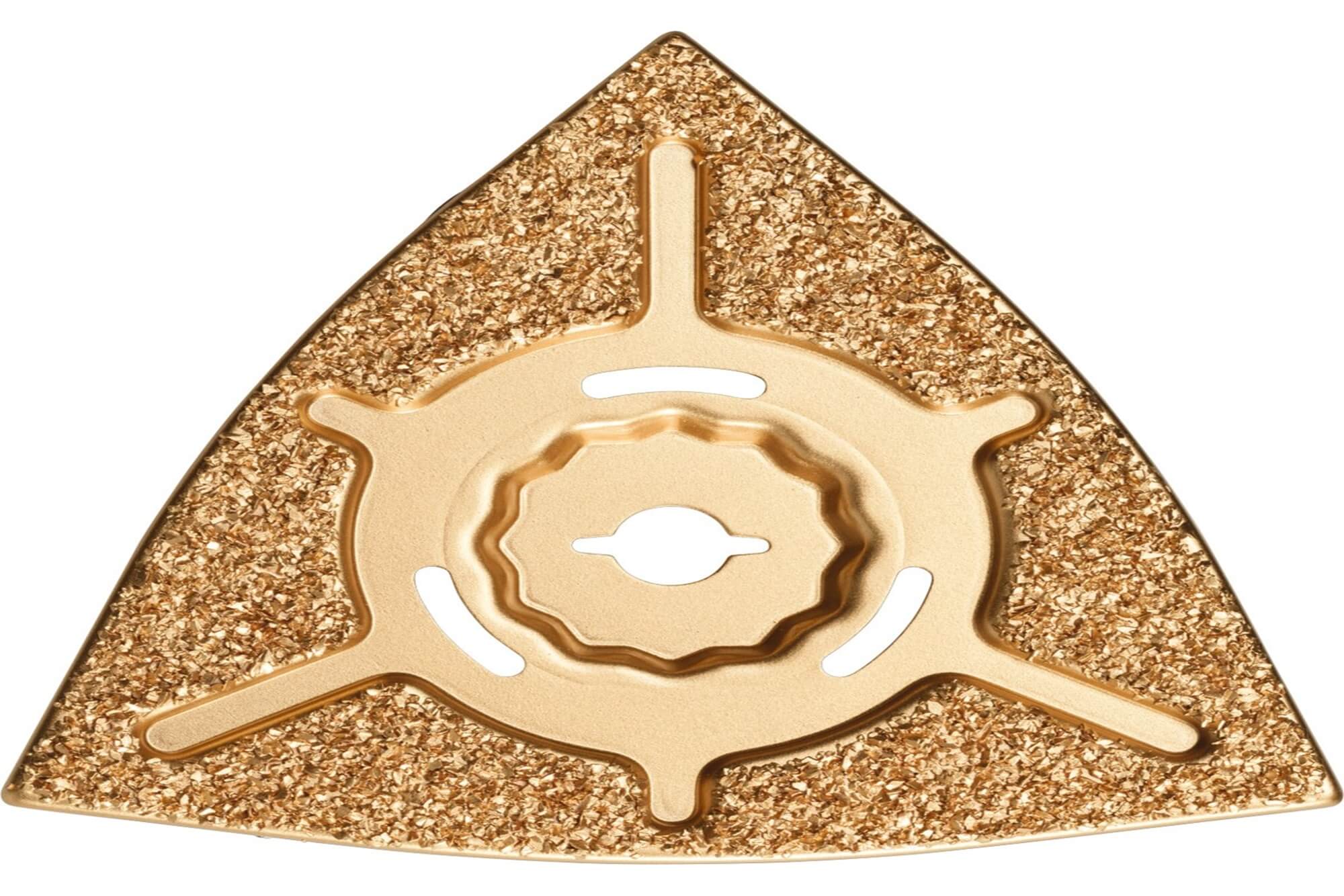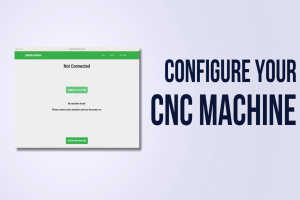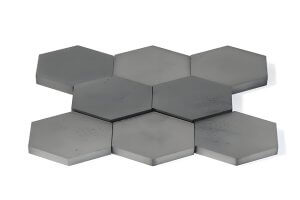Introduction: Elevating CNC Machining with the Carbide Scraper
In the fast-paced world of CNC machining, where precision defines success, the carbide scraper is often misunderstood as a rudimentary tool for scraping paint or rust. Yet, as someone who’s spent years in machine shops refining parts for aerospace and medical devices, I’ve seen firsthand how the carbide scraper transforms raw components into engineering masterpieces. This isn’t just a tool—it’s a precision instrument that ensures flawless surface finishes, tight tolerances, and optimal functionality in industries like automotive, aerospace, and beyond. Whether it’s creating oil-pocket patterns on machine guideways or perfecting bearing surfaces for minimal friction, the carbide scraper in CNC machining is about controlled material refinement, not just cleanup. In this article, I’ll share insights from my experience, blending technical analysis with practical applications to reposition the carbide scraper as a cornerstone of modern CNC machining workflows, while exploring its material science, tool types, and strategic integration for cost-effective finishing.
The Material Advantage: Why the Carbide Scraper Powers CNC Machining
The carbide scraper is only as good as the material behind it—tungsten carbide. Early in my career, I underestimated this tool, favoring high-speed steel (HSS) for its initial sharpness. But after countless hours deburring complex aluminum aerospace parts, I learned that the carbide scraper’s durability is a game-changer in CNC machining.
The Science of Tungsten Carbide in Carbide Scrapers
Tungsten carbide, a ceramic-metal composite, gives the carbide scraper its edge in CNC machining. Its key properties include:
- Unmatched Hardness: At 1600–2000 HV, the carbide scraper resists wear, maintaining sharpness through rigorous tasks like deburring stainless steel.
- Superior Rigidity: With a Young’s Modulus of 530–700 GPa, it ensures minimal deflection, critical for flat surfaces in CNC machining.
- High Compressive Strength: The carbide scraper withstands intense pressure without chipping, perfect for high-volume production.
- Thermal Stability: Retaining integrity up to 1000°C, it excels in high-friction CNC machining tasks.
I recall a project where we machined titanium components for medical implants. The carbide scraper held its edge through hundreds of parts, while HSS tools dulled within hours, proving its value in demanding CNC machining environments.
Carbide Scraper vs. High-Speed Steel in CNC Machining
In my early days, I favored HSS for its razor-sharp edge, ideal for one-off precision cuts. But in a high-throughput CNC machining shop, the carbide scraper’s longevity is unmatched. HSS dulls quickly on abrasive materials, requiring constant sharpening that disrupts workflow. The carbide scraper, with its sintered structure, delivers consistent performance over thousands of parts, reducing downtime. For CNC machining professionals, this reliability translates to lower costs and predictable results, making the carbide scraper the go-to choice.
| Feature | Tungsten Carbide | High-Speed Steel (HSS) | Implication for CNC Machining |
| Initial Edge Sharpness | Very Good | Excellent | HSS offers a finer initial cut, but the carbide scraper meets CNC machining needs for most finishes. |
| Edge Retention | Excellent | Poor to Fair | The carbide scraper minimizes tool changes in CNC machining, ensuring consistency. |
| Hardness | 1600–2000 HV | ~850 HV | The carbide scraper excels on abrasive materials in CNC machining. |
| Brittleness/Toughness | High Brittleness | High Toughness | The carbide scraper requires stable CNC machining setups to avoid chipping. |
| Heat Resistance | Excellent | Good | The carbide scraper performs under high-friction CNC machining conditions. |
| Ideal Applications | Production deburring, machine way finishing | Fine joinery, single-cut precision | The carbide scraper suits high-volume CNC machining. |
The CNC Machinist’s Toolkit: Types of Carbide Scrapers
The carbide scraper in CNC machining comes in various forms, each tailored to specific tasks. From manual tools to automated inserts, understanding these options is key to optimizing workflows.
Manual Carbide Scrapers: Precision Craftsmanship
Manual carbide scrapers are my go-to for intricate CNC machining tasks:
- Flat and Two-Handled Carbide Scrapers: These workhorses tackle large surfaces, removing burrs or residue. Their ergonomic design reduces fatigue during long CNC machining sessions.
- Triangular and Detail Carbide Scrapers: Perfect for tight corners and hole edges, these carbide scrapers ensure precision in complex CNC machining parts.
- Interchangeable-Tip Carbide Scrapers: With modular tips (round, tapered, knife-edge), these carbide scrapers adapt to mold finishing or fine detailing, enhancing versatility in CNC machining.
I once used a triangular carbide scraper to deburr a batch of aluminum aerospace fittings. Its precision saved hours compared to filing, proving its value in CNC machining.
Power Carbide Scrapers: Precision at Scale
Power carbide scrapers, like BIAX models, automate finishing for machine guideways in CNC machining. They create precise bearing point distributions, verified through “blueing-in,” ensuring low-friction surfaces. In a shop rebuilding CNC lathe ways, I saw a power carbide scraper cut finishing time by half, a testament to its efficiency in CNC machining.
Carbide Scraper Inserts: Automation Meets Precision
In modern CNC machining, carbide inserts embody the carbide scraper principle. Brands like Kyocera produce carbide scraper inserts for milling and turning, delivering repeatable finishes. These inserts bridge manual scraping to automated CNC machining, ensuring precision at scale.
Mastering CNC Machining Deburring with the Carbide Scraper
Deburring is a critical step in CNC machining, and the carbide scraper shines here. I’ve spent countless hours perfecting parts, learning that technique matters as much as the tool.
Why the Carbide Scraper is Vital in CNC Machining
Burrs aren’t just cosmetic flaws—they’re liabilities in CNC machining:
- Safety: Sharp burrs risk injury to operators and users.
- Functionality: Burrs disrupt part fit and seal performance.
- Performance: Burrs cause wear or contamination in moving parts.
- Coating Adhesion: The carbide scraper ensures clean edges for reliable coatings.
Deburring Aluminum in CNC Machining
Aluminum’s softness demands a delicate touch with the carbide scraper. I learned this the hard way when a heavy hand gouged a costly part. A flat blade angle and pulling motion from the edge inward prevent damage, ensuring a smooth finish in CNC machining.
Deburring Stainless Steel in CNC Machining
Stainless steel requires a firm, confident approach with the carbide scraper. Early in my career, I struggled with work-hardening until I mastered shearing burrs cleanly. A sharp carbide scraper is critical, and material separation prevents contamination, preserving corrosion resistance in CNC machining.
Optimizing CNC Machining Workflows with the Carbide Scraper
Choosing the right deburring method in CNC machining is a strategic decision. The carbide scraper plays a pivotal role, but its integration depends on production goals.
Manual Carbide Scraper Workflow
Manual carbide scraper use is labor-intensive ($0.42/part at $25/hour) and operator-dependent, ideal for low-volume, complex CNC machining tasks. I’ve used it for one-off prototypes, where precision outweighs speed.
In-Machine Deburring vs. Carbide Scraper
In-machine deburring with chamfer mills reduces costs ($0.05/part) and ensures consistency in CNC machining. Yet, for intricate geometries, the carbide scraper remains unmatched. I once combined both, using in-machine tools for rough deburring and a carbide scraper for final touches, cutting cycle time significantly.
Mass Finishing vs. Carbide Scraper
Tumbling is cost-effective for small parts but lacks the precision of a carbide scraper in CNC machining. For high-value components, I rely on the carbide scraper to avoid rounding delicate features.
| Metric | Manual Carbide Scraping | In-Machine Deburring | Mass Finishing (Tumbling) |
| Per-Part Cost | High | Very Low | Low |
| Consistency/Quality | Low to Moderate | Very High | Moderate |
| Speed/Cycle Time | Very Slow | Very Fast | Slow |
| Labor Requirement | High | Very Low | Low to Moderate |
| Upfront Investment | Very Low | Moderate to High | High |
| Ideal Part Complexity | High | High | Low to Moderate |
| Scrap/Rework Risk | High | Very Low | Low to Moderate |
| Floor Space/Logistics | Minimal | None | High |
Advanced Considerations: Maximizing Carbide Scraper Performance in CNC Machining
Coatings for Carbide Scrapers
PVD coatings elevate carbide scraper performance in CNC machining:
- TiN: Enhances lubricity for general tasks.
- TiAlN: Its heat resistance extends carbide scraper life on tough materials like titanium, a lesson I learned deburring Inconel parts under high friction.
Maintaining Carbide Scrapers
Sharpening a carbide scraper requires diamond abrasives and a light touch. I once restored a worn carbide scraper with a diamond lapping plate, extending its life for a critical CNC machining project, saving costs.
A Personal Perspective: The Carbide Scraper’s Role in My CNC Machining Journey
Reflecting on my career, the carbide scraper has been a quiet hero in CNC machining. Early on, I viewed it as a basic tool, but a project involving precision guideways for a CNC mill changed my perspective. Using a power carbide scraper, I achieved a mirror-like finish that outperformed automated methods, earning praise from the client. This experience taught me that the carbide scraper isn’t just about finishing—it’s about craftsmanship. For machinists seeking reliable tools, platforms like want.net offer a marketplace to source high-quality carbide scrapers, connecting shops with trusted suppliers.
Conclusion: The Carbide Scraper as a CNC Machining Cornerstone
The carbide scraper is more than a tool—it’s a bridge between manual skill and automated precision in CNC machining. Its material science, versatile applications, and strategic workflow integration make it indispensable for achieving safety, functionality, and quality. From my first hesitant cuts to mastering complex deburring, the carbide scraper has shaped my approach to CNC machining. For shops aiming for excellence, embracing the carbide scraper is a competitive edge. Visit want.net to explore advanced carbide scraper solutions for your CNC machining needs.
FAQ:
1. What is a carbide scraper, and how is it used in CNC machining?A carbide scraper is a precision tool used in CNC machining to remove burrs, refine surfaces, and achieve tight tolerances. Unlike basic scrapers for paint or rust, the carbide scraper in CNC machining is used for controlled material displacement, such as deburring aluminum or stainless steel parts, creating oil-pocket patterns on machine guideways, or optimizing bearing surfaces for low friction. Its tungsten carbide blade ensures durability and precision, making it essential for high-quality finishes in industries like aerospace and automotive.
2. Why is the carbide scraper preferred over high-speed steel (HSS) in CNC machining?The carbide scraper outperforms HSS in CNC machining due to its superior hardness (1600–2000 HV), edge retention, and thermal stability. While HSS offers a sharper initial edge, it dulls quickly on abrasive materials, requiring frequent sharpening. The carbide scraper maintains a consistent edge over thousands of parts, reducing downtime and ensuring process stability in high-volume CNC machining environments.
3. What types of carbide scrapers are used in CNC machining?In CNC machining, carbide scrapers come in several forms:
- Manual Carbide Scrapers: Flat, triangular, or interchangeable-tip models for deburring and surface cleanup.
- Power Carbide Scrapers: Automated tools like BIAX for finishing machine guideways with precise bearing point distributions.
- Carbide Scraper Inserts: CNC tooling inserts that apply the scraping principle for automated milling and turning. Each type is tailored to specific CNC machining tasks, from intricate prototypes to high-throughput production.
4. How does the carbide scraper improve efficiency in CNC machining workflows?The carbide scraper enhances CNC machining efficiency by delivering precise, repeatable finishes. Manual carbide scrapers are ideal for complex, low-volume parts, while in-machine deburring with carbide scraper inserts reduces labor costs (e.g., $0.05/part vs. $0.42/part for manual). By minimizing rework and ensuring clean edges, the carbide scraper streamlines workflows and improves part quality in CNC machining.
5. What are the best practices for deburring with a carbide scraper in CNC machining?Deburring techniques with a carbide scraper vary by material:
- Aluminum: Use a light touch, flat blade angle, and pull from the edge inward to avoid gouging.
- Stainless Steel: Apply firm pressure with a sharp carbide scraper to shear burrs cleanly, preventing work-hardening. Ensure material separation to avoid contamination. These practices, honed through experience, ensure high-quality results in CNC machining.
6. How do coatings like TiN and TiAlN enhance carbide scraper performance?In CNC machining, coatings like TiN (Titanium Nitride) and TiAlN (Titanium Aluminum Nitride) improve carbide scraper durability. TiN enhances lubricity for general tasks, while TiAlN’s heat resistance excels on tough materials like stainless steel or titanium, extending carbide scraper life in high-friction CNC machining applications.
Reference:
https://patents.google.com/patent/CN108349241A/zh
https://patents.google.com/patent/CN202730219U/zh
https://patents.google.com/patent/CN102256794A/zh
Other Articles You Might Enjoy
- Cemented Carbide: The Material Science and Application Strategies Driving High-Performance CNC Machining
Part 1: The Material Science of Cemented Carbide: The Core of CNC Machining As a machinist with 15 years of experience, I’ve come to appreciate cemented carbide as the unsung…
- Silicon Carbide and CNC Machining: A Comprehensive Technical Analysis of Materials, Processes, and Applications
Introduction Silicon carbide (SiC) stands as a pinnacle of advanced ceramics, engineered to thrive in environments that push materials to their limits. Its extraordinary hardness, thermal resilience, and chemical stability…
- Beyond Steel: The Science and Strategy of Carbide Drill Bits in Modern CNC Machining
In the high-stakes world of CNC machining, where precision, speed, and cost-efficiency collide, carbide drill bits have become the unsung heroes of high-performance holemaking. As a machinist with over a…






